Enzo Ferrari is once quoted as saying, “Aerodynamics are for people who can’t build engines.” Whether or not that is true, the fact is that aerodynamics has played an essential role in NASCAR racing for decades now. The late 1960s and the start of the 1970s saw this black art growing in importance, and the result was the development of cars like the 1970 Plymouth Road Runner Superbird. That tapered nose and enormous wing were not the most practical features to grace a road car, but they were invaluable as you pushed towards 200mph on the banks of the hallowed Daytona International Speedway. Its time in the sun was fleeting, with tightening race regulations rendering the Superbird uncompetitive in the sport by 1971. This Superbird is a spotless survivor that needs a new home. It is also a car that bears the signature of a racing great who drove one of these in the field of battle. If you think that the new home for the Superbird could be yours, you will find it located in Clear Brook, Virginia, and listed for sale here on eBay. The BIN has been set at an eye-watering $350,000, but there is the option to make an offer.
The styling of the Superbird owed nothing to subtlety. This was a car designed to extract maximum performance in the heat of stock car competition, especially on superspeedways like Daytona and Talladega. The tapered nose was designed to cut cleanly through the air, while the enormous rear wing was designed to provide downforce to improve corner grip. It represented an evolution of the concept seen in 1969 on the Dodge Charger Daytona and was 1-of-4 “aero” models, alongside the Ford Torino Talladega and the Mercury Cyclone Spoiler II, that appeared during this period. All pushed the boundaries of speed and safety, and all were effectively outlawed in their original forms by the time racing commenced in 1971. This Superbird is finished in its original Antique White, with a Black vinyl top. The paint shines beautifully, and the vinyl top is in as-new condition. It is kept in climate-controlled storage when it isn’t in use, which has helped it remain rust-free. The panels are laser straight, and all of those distinctive aero pieces appear to be perfect. All of the correct decals and badges are in place, while the Plymouth rolls on its original Rallye road wheels. There is one aftermarket addition to the exterior, but I’m sure that most enthusiasts won’t object to this.
Racing improves the breed, and plenty of manufacturers have lived by the creed, “win on Sunday, sell on Monday.” Richard Petty, later nicknamed “The King,” was Plymouth’s poster boy in NASCAR competition. However, Ford managed to lure him away for the 1969 season. Plymouth knew his value, so part of the motivation behind developing the Superbird was to draw him back into the fold. This they did, and he rewarded them with eight wins during the 1970 season. It seems only fitting that the only aftermarket feature on this Superbird is The King’s autograph on the rear wing end-plate.
Plymouth offered three engine options in the Superbird, and none of them would be classed as wimps. This one features the entry-level 440ci V8, which is backed by a 3-speed A-727 TorqueFlite transmission. With 375 horsepower under the right boot, this is no slouch if you point it down the ¼ mile. The journey would take a mere 14.3 seconds, while the car should be able to wind its way to 134mph. That’s a long way shy of the 200mph of the superspeedways, but more than you could ever need on your local freeway. Surprisingly, the owner doesn’t indicate how well the Plymouth runs or drives. The engine bay does present superbly, so coupled with the asking price, you’d have to think that it is in good health. The owner does say that the car has a genuine 40,000 miles on the clock. Given the amount of documentation that is to be included in the sale, I wouldn’t be surprised if there is evidence to back the mileage claim. Included is the original Window Sticker, Broadcast Sheet, Warranty Card, original Inspection Certificate, and an information letter from Chrysler.
The Plymouth’s interior presents just as nicely as the rest of the vehicle, and there are no problems to spot here. The upholstery is free from wear and other issues, while there are no problems with the dash, pad, or carpet. The car was ordered with bucket seats, a console, a Tic-Toc-Tach, and an AM radio. All of these items remain intact, and there have been no aftermarket additions.
Automotive history is rich with cars that were produced as homologation specials for motorsport competition. The “aero” cars represented a special moment in NASCAR history, and like so many of their type, they were banned because they were too good. The Plymouth Superbird pushed the boundaries of tire technology and safety, and the governing body acted before the human toll could escalate. Today, these vehicles are highly-sought classics, but their value means that they require someone with a certain level of commitment to own one. With that thought in mind, are you likely to be one of those people?
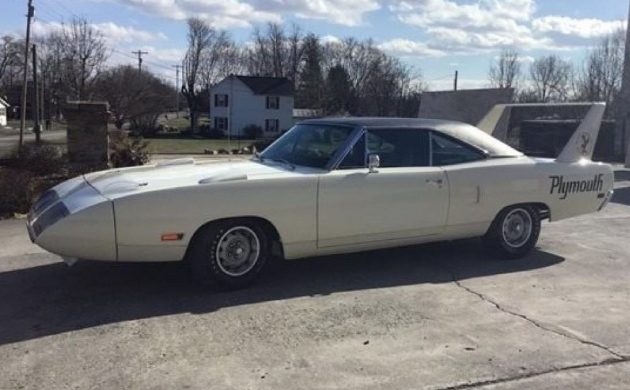
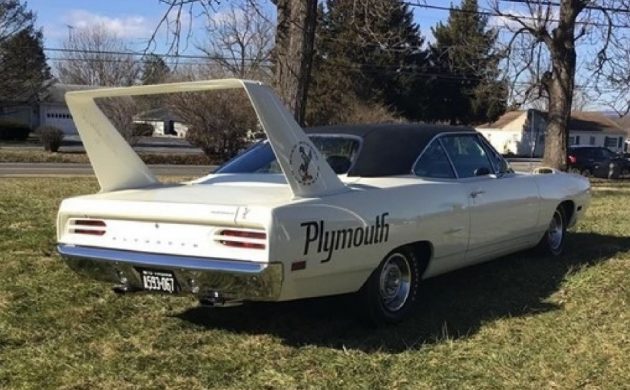

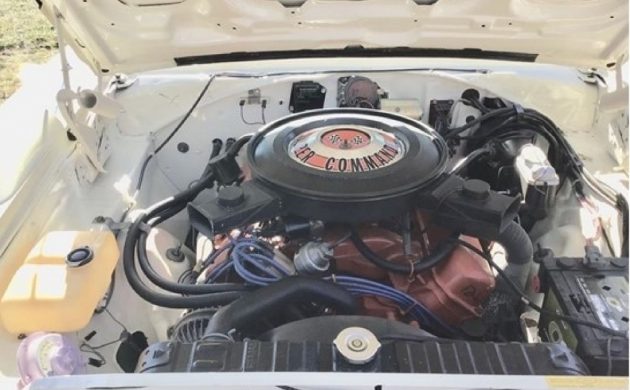
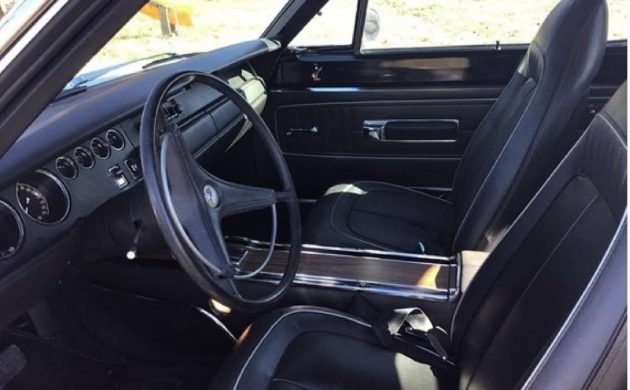
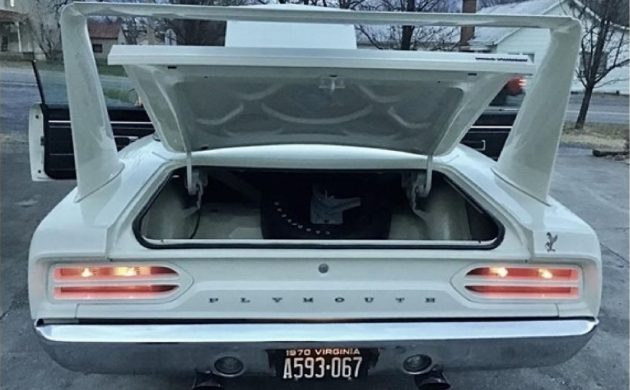
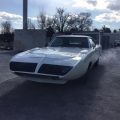





Seems like a strange place to put a signature –
wouldn’t inside the trunk lid be better preserved?
These are cool cars,but,to,me,would get old in a
short time,as you wouldn’t want to drive it too much as
it’s not too practical.
I think of the many cars I could buy (& enjoy more)
for that kind of money.
For that kind of money? Two Superbirds!
“Signed By The King!”
I didn’t realize Elvis owned a Superbird.
Check it for bullet holes and you’ll know for sure
Why don’t you just ask Elvis, his still alive you know..
“Thank you. Thank you very much!”
There is one that looks like this one’s twin on Ebay for less than half the price, and it’s a 6 barrel car…wait….it does not have the King’s signature on it…guess that makes it worth the asking price…
There were 5 aero cars of this era. The actual car that started this. The 1969 Charger 500. I had 3.
Second one, Talladega. Third, Mercury Cyclone Spoiler II. Then, the Daytona. All 1969 models.
Last, 1970 SuperBird.
Usac and arca did not restrict them. Only Nascar.
But, in 1971, you could run the 5 cars, but with a 305 C I.
So, one was done so in one race. The 1971 Daytona 500. Led 6 laps.
As for signature, Richards arm got tired from signing hundreds of then.
Under trunk lid was harder to sign so many.
If you can’t afford it or cost too much for, don’t buy it. Like any car, when you get something to sell, bet you start hi and let them talk you down.
p s, I always drove both my Daytona’s a total now of 476,000 miles. Both with trailer hitches.
Son took two today to run on the Chuckwalla road course 5 miles North of Desert Center, California
I believe this car was owned by a former dodge dealer/mehanic in north Berkeley. If it is the 40k miles is probably true. Last time I saw it was in 1985 driving up Broadway in Oakland. It was getting prepared for sale I think. It was nearly perfect then. It was one of the last of 5 Birds in Berkeley/Oakland that I knew of. There was another one in a shop along with a Hemi Cuda off Broadway and one more near Mormon Temple w/o wing and nose. Anyone else remember the 2 on Telegraph & Claremont gas station?
Always lusted over these cars as a kid/teen. If this is the one from No.Berkeley glad to see it’s still well care for and still original. The price though is a little steep for no Hemi/6pk. Love it!
this is the superbird that was stolen off the showroom floor. the chrylser plymouth dealer was on shattuck blv. in berkeley, ca
Its nice but agree sign the glove box or under the trunk lid.
Its a beauty but storing and afraid to drive it for wear and tear is no
Good luck on sell and wining bid for retirement car sale.
“but their value means that they require someone with a certain level of commitment to own one”
Huh?
When they were new we called them “Stupid Birds”. To me, that’s all they will ever be.
When they were new we called them “Ford and Chevy Killers”. To me, that’s all they will ever be.
Outstanding write-up Adam, nice job.
I live very close to Randleman, NC and if you don’t have Richard’s signature, you don’t want it! One of the nicest people you’ll ever meet! You could probably knock on his door and asked him for it.
I saw an interview with Petty. He said that when the rear of the car would get loose and start to drift, the wing would actually bring it back so you could control it.
Don Page, there was more in that interview that pertains to the wing cars.
Petty said he hated the cars because it made other drivers as good as he was. Stemming from these cars would straighten out your problem for ya.
Headin off to a car show, cars n coffee this mornin. Later
$375- for a white 440 4 bbl Auto ???? Have the prices on these cars gone up that much?? I sold one back in 2001 for $75k and It only had 19k. Hemi Orange 6 pack 4 Speed car with original paint. Still got the original tires out back.
I walked up to Richard at Daytona in 1998. He gladly signed an autograph for me. It took him forever with those big sweeping letters. Anyway, this car is worth half the price, there were like, what 1,900 Superbirds made. About half of them are for sale. This one has only the base engine, cheap Advanced Auto spark plug wires and maybe it’s the camera, but that engine color looks like 1968 Oldsmobile 442 paint. These cars are selling for about $140,000 these days. The heyday of the $1 million Mopars is over and likely over for good. People that even recognize this old stuff are getting old and dying. Think about it, this car is 51 years old. I worked at a Chrysler Plymouth dealer back then and washed cars, pumped gas, fixed flat tires, etc. We had an orange one in the showroom for about 2 years, nobody wanted that stupid looking car. We used to hang our detailing towels over the wing to let them dry. I remember it arrived on a transporter in a snow storm, it was orange, and it would not start. Since I was 14 years old, I was talked into climbing up to the driver with jumper cables. I eventually owned a 70 Road Runner, FE5 with many options, but that is long gone now. Ah memories.
In the heyday of these cars, Chrysler couldn’t sell them (they were pretty expensive and just a bit garish) so they made managers drive them as company cars. As I understand it, most were base 440s and only a few were the Hemis that bring in the big bucks now. As for the 14.3 in the 1/4, I’ve done that in my modern V6 Mustang and I’m pitiful at drag racing. Can’t launch to save my soul so it says a lot about the difference technology brings. That said, yeah, I’d want one. For significantly less than the asking price on this.
Exactly, they couldn’t give these things away. The aerodynamic benefits that worked in the NASCAR roundy rounds didn’t translate to a street car. Then add Chrysler’s notoriously bad build quality. Just another 60’s “Muscle Car” that had garbage brakes and couldn’t go around a corner. But pretty impressive to a high school kid.
No way would I pay that for a base 440 automatic even in the Superbird wrapper
While I would love to have one, I would only buy one to drive it,regardless of the price
Cars are made to be driven
even the Hemi 4 speeds
I am usually not a fan of clone cars, but don’t mind seeing one of these done as a clone.
I saw one at a car show, done really nice, and there was a huge crowd around it. The owner made no bones about it being a clone, but that didn’t stop people from admiring it. He was happy to answer all questions and was very proud of all of the work he put into it.
Didn’t dealerships back in the day change the sheet metal to a regular Road Runner just to sell them? If I owned a 1970 Road Runner I would be looking at the numbers. The same goes when looking to buy a 70 Road Runner. Memories fade over 51 years and cars go up for sale after Uncle Louie passes on and the family selling doesn’t have a clue. You never know. There could be a Superbird masquerading as a 440 Road Runner out there and for sale right now.
The easiest way to check is to look at the rear glass ; Superbirds had a modified roof with a fiberglass insert and a smaller rear glass , the Roadrunners had no insert . Of course if the Roadrunner has no vinyl roof , its a dead giveaway that it was not a Superbird.